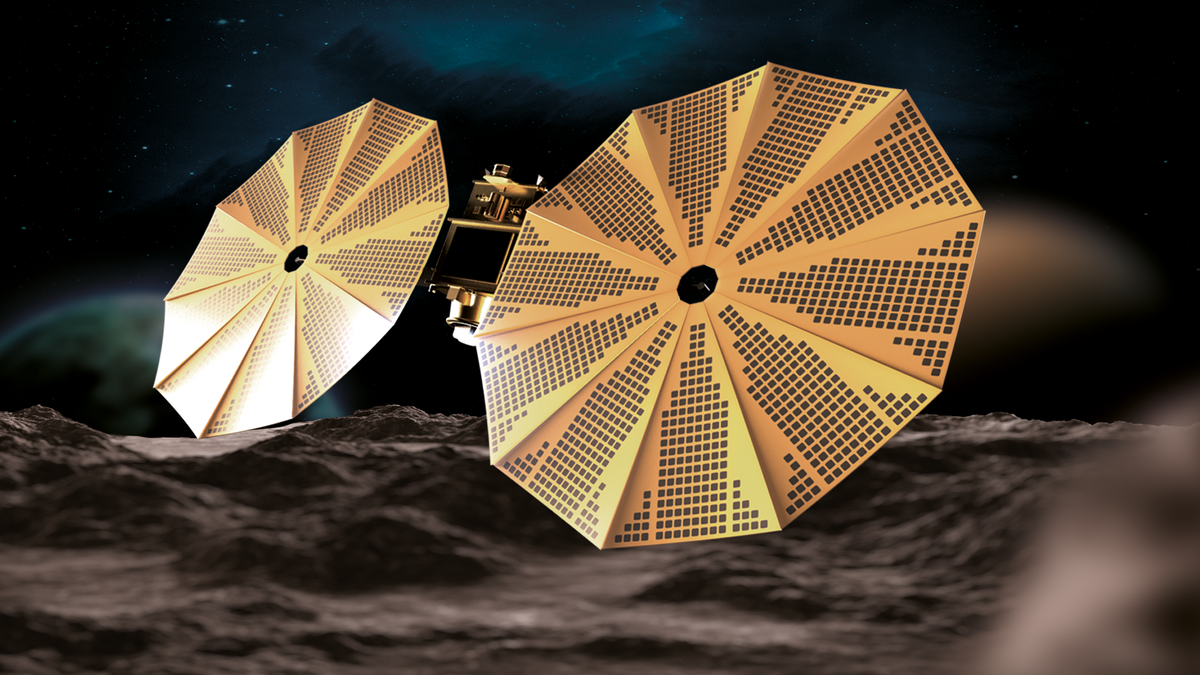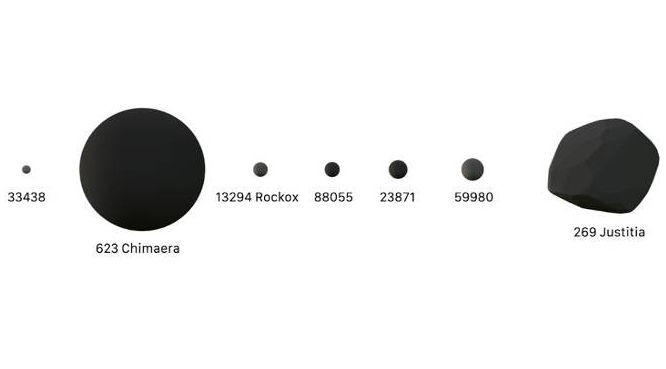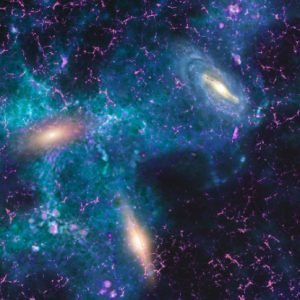
BOULDER, Colorado — The United Arab Emirates (UAE) Space Agency is moving forward on a one-after-another mission to the main asteroid belt.
The probe will conduct high-speed flybys of six asteroids, completing the spectacular sojourn with a rendezvous and orbiting of a seventh mini-world — and then deploy a small lander onto that final space rock destination.
The UAE and its partners have made significant progress on the bold effort, as outlined below.
Key piece of the puzzle
The Emirates Mission to the Asteroid Belt (EMA) is projected to launch in March 2028, ending its interplanetary tour by arriving at the asteroid 269 Justitia in 2034. That rocky chunk of history may have migrated from a region where giant planets formed — or from even farther out.
Related: UAE’s ambitious asteroid mission will tour 7 space rocks
Five of the seven asteroid targets are carbonaceous “C-complex” rocks. That means that EMA can characterize a diverse set of carbonaceous bodies, some potentially rich in phyllosilicates, which form a key piece of the puzzle regarding early solar system formation.
The UAE’s enterprising mission builds on the success of the ongoing Emirates Mars Mission, the first interplanetary exploration undertaken by an Arab nation.
The EMM’s Hope orbiter launched back in July 2020, arrived at Mars in February 2021 and continues to monitor the Red Planet’s weather from above.
Collaboration
The UAE Space Agency in Abu Dhabi is embarking on the upcoming EMA mission in collaboration with the Laboratory for Atmospheric and Space Physics (LASP), here at the University of Colorado Boulder.
This new space trek will span 13 years, with a six-year spacecraft development phase followed by a seven-year voyage to the main asteroid belt beyond Mars.
“As one of only a few asteroid missions ever planned, and the first multi-asteroid tour and landing mission to the main belt, it’s very ambitious, and LASP is very excited to be involved,” Pete Withnell, LASP’s program manager for the mission, told SPACE.com.
A joint team of engineers from both the UAE’s Mohammed bin Rashid Space Center and LASP are scoping out the EMA mission.
EMA involves a consortium of academic and hardware development partners within the UAE, Withnell said. The project also includes a number of international “knowledge partners,” including LASP, the Italian Space Agency, the Italian National Institute for Astrophysics, Leonardo SpA, Arizona State University, Northern Arizona University and Malin Space Science Systems in San Diego.
“As the primary knowledge transfer partner, LASP is working in partnership with the UAE Space Agency on all aspects of the mission,” Withnell said. This includes mission design, spacecraft development, system testing and engineering and science team development and apprenticeship. LASP also supports the UAE Space Academy program, he said.
Related: UAE’s Hope Mars orbiter: The Arab world’s first interplanetary mission

Fully equipped
The EMA probe will be outfitted with four instruments: a visible narrow-angle camera, a mid-wave infrared spectrometer, a thermal infrared spectrometer and a thermal infrared camera.
The spacecraft will use this scientific gear for a variety of tasks, including:
- Determine the geologic history and volatile content of multiple main belt asteroids, and investigate the interior structure of the rendezvous target;
- Determine temperatures and thermophysical properties on multiple asteroids to assess their surface evolution and volatile histories;
- Collect remote-sensing data on a representative suite of asteroids to better characterize their potential for in-situ resource utilization for future deep space exploration.
Here’s the selected score card of asteroids that EMA will reconnoiter: 10253 Westerwald, 623 Chimera, 13294 Rockox, 88055 (2000 VA28), 23871 (1998 RC76), 59980 (1999 SG6) and 269 Justitia.
Asteroid resources
Heyam Alblooshi, a design engineer with the UAE Space Agency, spoke at this year’s Space Resources Roundtable, which was held at the Colorado School of Mines in June. She was involved in UAE’s Mars Hope mission.
Alblooshi highlighted the EMA mission and its ability to identify and characterize resources, including volatiles, silicates and metals on multiple types of asteroids, as well as determine resource mass estimates and distributions based on the interior structure of an asteroid.
EMA can help prepare the way for future asteroid resource use, demonstrating proximity operation maneuvers to simulate landing and orbital rendezvous, Alblooshi said. She noted that the EMA lander to be deployed at the asteroid Justitia is under development by 971 and Sadeem — two private companies in the UAE. That lander design will be finalized this year.
Flight dynamics
Also engaged in EMA and a veteran of the UAE’s Mars Hope mission is Fatema Hameli, a space projects development engineer for the UAE Space Agency. Her work is in navigation systems for the multi-asteroid visiting asteroid adventure.
“I’ll tell you, Mars is easy to reach from a flight dynamics perspective. But getting to seven asteroids in the main belt is not easy. It’s very challenging,” Hameli told Space.com after her talk on Aug. 13 at the 2024 Astrodynamics Specialist Conference.
That high-tech specialist meeting was hosted by the American Astronautical Society and co-hosted by American Institute of Aeronautics and Astronautics and held in neighboring Broomfield, Colorado.
As a solar electric propulsion mission, Hameli reported, there are many models and assumptions that go into designing EMA’s interplanetary trajectory. Recent work has gone into understanding the sensitivity of the trajectory and the overall mission objectives.
The still-to-be-built EMA spacecraft has two separate propulsion systems: chemical hydrazine thrusters and solar electric propulsion xenon Hall effect thrusters, Hameli explained. The mission will utilize xenon for its primary propulsion needs due to its high specific impulse, translating to efficient fuel usage for long-duration interplanetary travel, she said.
Selecting the precise arrival date at a rendezvous target with asteroid 269 Justitia is critical for a successful mission and is an important factor in mission design, Hameli pointed out.
“The lander is a huge step as one of our main objectives,” said Hameli. UAE Space agency teams are developing the navigation software, she said — all the tools that will allow EMA to spend a couple of months at asteroid Justitia to find a site for the spot landing.
“We keep learning as we go,” Hameli said. “For me, this is a childhood dream.”






